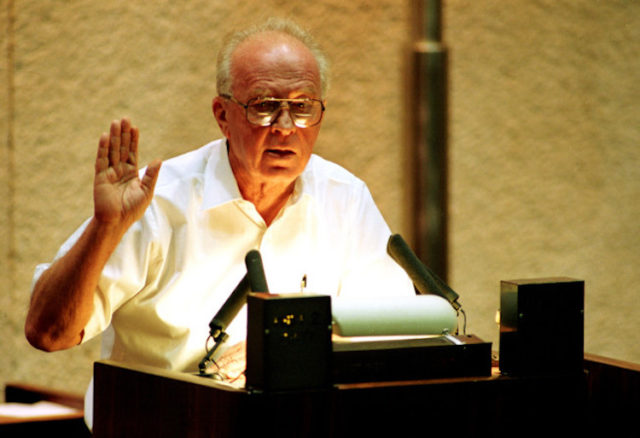(A shorter version of this article appeared as a Letter to the Editor in the Feb. 11, 2017 edition of The Washington Post.)
Accusations of fake news keep making headlines, as they have since last fall’s elections. Less attention has been given a parallel problem that too often goes undetected: simple but chronic misreporting. Less blatant than false news—which is to say someone’s propaganda—misreported news—frequently someone’s public relations—can contribute in the long run to public misunderstanding of important issues.
Two Washington Post articles early in 2017 about Israel and Arab-Israel subjects, while hardly “fake news,” illustrated the danger of counter-factual reporting.
In the first, “Jerusalem mayor releases video praising Trump,” Jan. 20, 2017, The Post reported that Tel Aviv is 50 miles from Jerusalem. If only; 50 miles in Israeli-Palestinian terms is practically transcontinental.
It’s actually 33 miles from Tel Aviv on the Mediterranean coast to Jerusalem on the crest of the Judean mountains. If it were 50, Jerusalem would sit on the shore of the Dead Sea opposite Jordan. At that point, by implication, there’d be no West Bank.
The article also claimed “[Barack] Obama, as has every other modern-day president, supports a two-state solution to the long-running Israeli-Palestinian conflict.” In fact, the two-state solution has been a U.S. diplomatic possibility only since the Clinton administration. It was publicly endorsed for the first time by an American president only in George W. Bush’s first term. Perhaps George H.W. Bush and his immediate predecessors were not “modern-day presidents.”
In the second partly counter-factual report, “Netanyahu thinks ‘state-minus’ is enough for the Palestinians,” January 29, The Post alleged that “for a generation, the Palestinian leadership in Ramallah has been very specific about what it wants: a sovereign state in the West Bank and Gaza Strip, based on 1967 borders, with East Jerusalem as its capital.” Aside from the fact that there are no “1967 borders” between Israel and the West Bank, only the 1949 Israeli-Jordanian armistice line, the newspaper failed to remind readers that the Palestinian leadership rejected in 2000, 2001 and 2008 U.S. and Israeli offers of exactly what the article asserted those leaders want.
The dispatch also said “Israelis, Palestinians and American diplomats have been struggling to define what Netanyahu might have meant by ‘state minus’” arrangement instead of a two-state solution. No “struggling” was necessary for anyone familiar with basic Israeli-Palestinian diplomacy.
Prime Minister Yitzhak Rabin’s position, even after the 1993 Israeli-Palestine Liberation Organization Oslo Accords, favored Palestinian self-rule but not full sovereignty. He reiterated in his last Knesset speech, Oct. 5, 1995, regarding the Israeli-Palestinian interim agreement of that year: “We would like this [Palestinian self-rule on parts of the West Bank and Gaza Strip] to be an entity which is less than a state, and which will independently run the lives of the Palestinians under its authority. The borders of the State of Israel, during the permanent solution, will be beyond the lines which existed before the Six-Day War. We will not return to the 4 June 1967 lines.”
Rabin also insisted that Israel’s security border would remain along the Jordan Valley. Altogether, his vision sounded a bit like “state-minus,” but this too The Post omitted.
If a major news outlet can’t get the distance from Tel Aviv to Jerusalem right, has developed amnesia in the years between Rabin’s non-sovereign self-determination and Netanyahu’s “state-minus” and ascribes aspirations to Palestinian leadership that it has not embraced, it won’t be much help to readers trying to filter fool’s gold from the real nuggets.
Journalists work on deadlines. In the ever-accelerating news cycle of the digital age, deadlines trip over one another ceaselessly. The process can squeeze relevant details and the time to check them. Speed in posting content, rather than accuracy in publishing news, becomes tempting if not mandatory in the struggle for advertising-worthy “clicks” or page views. And as for making and retaining news memory, ever-changing pixels on screen appear less supportive than print fixed on paper.
Technological changes may make it easier to fake news. But to prevent Internet-enabled dis- and misinformation from undermining journalistic ideals, it will take more than exposing the inventions. It will require what credible news coverage always has, reporting that is as comprehensive as time and news space allow. Basically incomplete or one-sided reports are not outright fabrications. But they fake out news consumers nonetheless.






